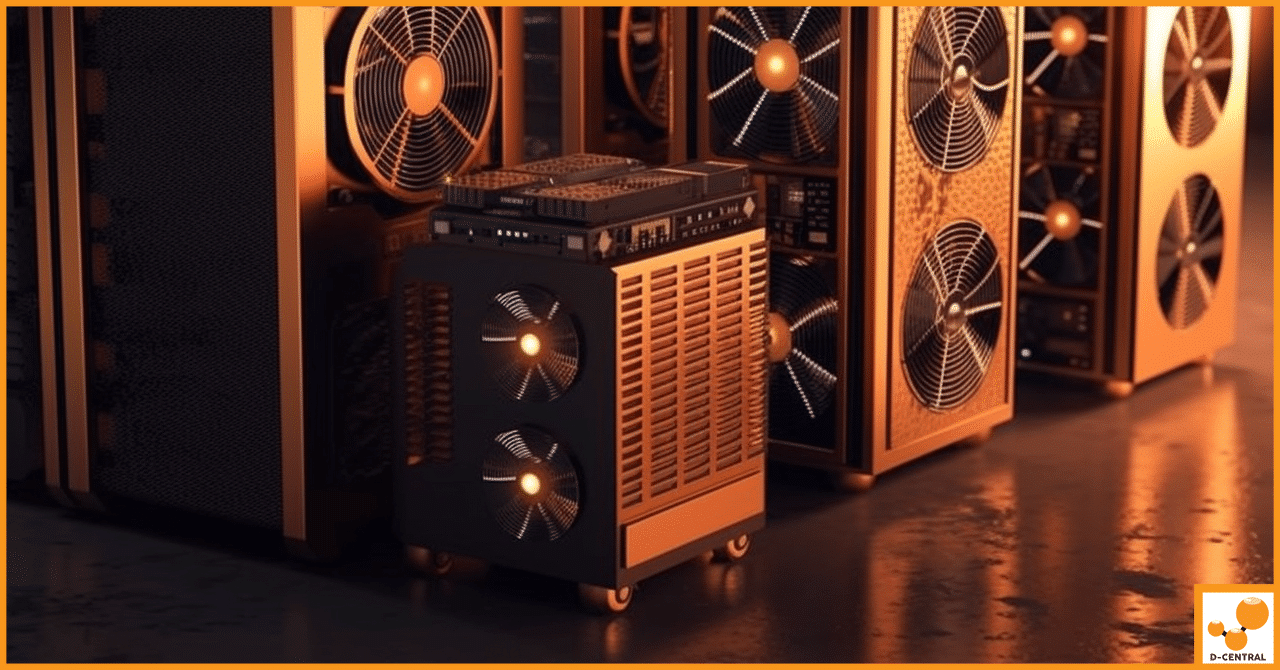
Le Bitcoin est-il soutenu par quelque chose ?
Un des débats entourant Bitcoin aujourd’hui concerne son soutien par quelque chose. Certaines personnes sont sceptiques quant à l’achat de
4479 Desserte Nord Autoroute 440, Laval, QC H7P 6E2

In the dynamic world of cryptocurrency, Bitcoin mining has emerged as a lucrative yet challenging endeavor. This process involves solving complex mathematical problems to validate transactions and add them to the blockchain, a public ledger of all Bitcoin transactions. However, one aspect that often goes unnoticed in this digital gold rush is the importance of heat management.
Bitcoin mining, particularly with high-performance hardware, generates a significant amount of heat. This heat, if not managed effectively, can lead to decreased efficiency, hardware damage, and even safety risks. Therefore, efficient heat management is a critical aspect of successful and sustainable Bitcoin mining.
Interestingly, the heat generated by Bitcoin mining has also opened up innovative applications. One such concept is a Bitcoin mining rig that doubles as a space heater. This dual-function setup not only contributes to the Bitcoin network but also provides a practical solution for space heating, particularly in colder climates.
In this comprehensive guide, we will delve into the intricacies of Bitcoin mining, the significance of heat management, and the innovative concept of a Bitcoin mining rig functioning as a space heater. Whether you’re a seasoned cryptocurrency miner or a curious enthusiast, this guide will provide valuable insights into the fascinating intersection of cryptocurrency mining and heat management.
Bitcoin mining is a process that involves solving complex mathematical problems, known as proof-of-work, to validate transactions and add them to the Bitcoin blockchain. This process is carried out by specialized hardware known as ASICs (Application-Specific Integrated Circuits) or GPUs (Graphics Processing Units). These machines are designed to perform billions of calculations per second, which is necessary for mining Bitcoin.
However, this high-intensity computational process generates a significant amount of heat. The reason for this is twofold. First, the electrical energy that powers the mining hardware is converted into computational power, but not all of this energy is used efficiently. Some of it is lost as waste heat due to the inherent inefficiencies in the hardware.
Second, the process of performing billions of calculations per second generates heat due to the resistance encountered by the electrical currents flowing through the circuits of the mining hardware. This is a fundamental principle of electronics known as Joule heating, or resistive heating, where the passage of electric current through a conductor produces heat.
Therefore, the heat generated during Bitcoin mining is a byproduct of the intense computational processes and the electrical inefficiencies in the mining hardware. This heat needs to be effectively managed to maintain the efficiency of the mining operation and prevent damage to the hardware.
Efficient heat management is a critical aspect of Bitcoin mining that directly impacts the efficiency of mining operations and the longevity of mining equipment. The heat generated during the mining process, if not properly managed, can lead to several adverse effects.
Firstly, excessive heat can reduce the efficiency of mining operations. High temperatures can cause the mining hardware to throttle its performance in an attempt to cool down. This throttling can significantly decrease the computational power of the hardware, leading to a lower hash rate, which is the speed at which a miner can complete an operation in the Bitcoin code. A lower hash rate means fewer chances of solving the mathematical problem and earning Bitcoin rewards.
Secondly, prolonged exposure to high temperatures can lead to hardware damage. The electronic components of mining hardware, such as the circuits in ASICs or GPUs, can degrade or fail under excessive heat. This not only leads to costly repairs or replacements but also results in downtime for the mining operation, further reducing its profitability.
Lastly, efficient heat management is crucial for the safety of the mining operation. Excessive heat can lead to risks such as fires, especially if the mining operation is not adequately ventilated or if the heat is not dissipated effectively.
Therefore, implementing efficient heat management strategies is essential for maintaining the efficiency and profitability of Bitcoin mining operations, extending the lifespan of mining equipment, and ensuring the safety of the operation. These strategies can range from simple solutions like proper ventilation to more complex methods like liquid cooling systems or the innovative use of mining heat for space heating.
Creating a Bitcoin mining rig that also serves as a space heater is an innovative way to make the most out of the heat generated during the mining process. Here’s a detailed guide:
By following these steps, you can set up a Bitcoin mining rig that also functions as a space heater. This innovative setup allows you to contribute to the Bitcoin network while also providing a practical solution for space heating.
In the rapidly evolving world of Bitcoin mining, the development of innovative solutions for heat utilization is of paramount importance. Among these pioneering solutions, Heatbit and TechEngineer have carved out a niche for themselves.
Heatbit offers a unique solution that transforms the heat generated by Bitcoin mining into a practical heating resource. This ingenious design harnesses the thermal energy produced during the mining process to heat spaces, effectively turning a byproduct into a beneficial resource.
TechEngineer is a company that specializes in creating custom solutions for heat management in Bitcoin mining. Their services range from designing and building mining farms to providing solutions for heat extraction and reuse, showcasing their commitment to sustainable and efficient mining practices.
At D-Central, we are proud to offer our own innovative solutions for heat utilization in Bitcoin mining. One such solution is our Bitcoin Space Heater. This product includes high-performance machines like the Antminer L3+ and Antminer S9, which are known for their significant heat generation. This heat can be harnessed to provide space heating while mining Bitcoin.
The Bitcoin Space Heater is designed by Cryptocloaks, with the L3+ and S9 versions being entirely their creation. The Antminer T17/S17 version, however, is a collaborative effort between Cryptocloaks and D-Central. D-Central sponsored the creation of the Antminer T17/S17 3D printed space heater box. In both cases, the STL file is free to download, and you are free to print your own.
In addition to the Bitcoin Space Heater, D-Central offers a range of other heat management solutions. These include Cloudline fans, shrouds, immersion and hydro kits, as well as Lian Li radiators specifically designed for home miners. Our solutions cater to a wide range of needs, making them perfect for DIY enthusiasts, hobbyist miners, and commercial operations looking to recycle heat effectively.
For all your Bitcoin 3D printing needs, feel free to contact D-Central in Canada or Cryptocloaks in the US. These innovative solutions demonstrate how the challenge of heat management in Bitcoin mining can be turned into an advantage. By effectively managing and utilizing the heat generated during mining, miners can maintain the efficiency and longevity of their equipment while also using the heat for practical purposes such as space heating. This is a testament to the innovative spirit of the Bitcoin mining community and its commitment to finding sustainable and efficient solutions for its challenges.
Bitcoin mining difficulty adjustment is a key feature of the Bitcoin network designed to maintain the average time it takes to mine a block. This mechanism ensures that regardless of the total computational power of the network, a new block is added to the blockchain approximately every 10 minutes.
The difficulty of mining a Bitcoin block adjusts approximately every 2016 blocks, or roughly every two weeks. If more miners join the network and the total hash rate increases, leading to blocks being mined faster than every 10 minutes, the difficulty will increase. Conversely, if miners leave the network and the total hash rate decreases, causing blocks to be mined slower than every 10 minutes, the difficulty will decrease.
This dynamic adjustment of mining difficulty has a direct impact on mining profitability. When the difficulty increases, miners need more computational power to solve the mathematical problems, which means more electricity consumption and higher operational costs. This can reduce the profitability of mining, especially for miners with less efficient hardware or higher electricity costs.
On the other hand, when the difficulty decreases, miners need less computational power to mine a block. This can increase profitability, especially in the short term. However, a decrease in difficulty often indicates a decrease in the total hash rate of the network, which could be a sign of fewer miners and potentially less network security.
Understanding Bitcoin mining difficulty adjustment is crucial for miners as it helps them anticipate changes in mining profitability and make informed decisions about their mining operations. Whether it’s upgrading hardware to maintain competitiveness in times of increasing difficulty or seizing the opportunity to mine more profitably when difficulty decreases, being aware of these adjustments can be a key factor in successful Bitcoin mining.
In the realm of Bitcoin mining, the design and layout of the mining facility play a crucial role in enhancing mining performance. Customized facility designs can significantly improve the efficiency of mining operations, leading to increased profitability.
A well-designed mining facility takes into account several factors. Firstly, it ensures efficient heat management. As discussed earlier, Bitcoin mining generates a significant amount of heat. A customized facility design can incorporate effective ventilation systems, cooling solutions, and even innovative heat utilization strategies to manage this heat, thereby maintaining the efficiency and longevity of the mining hardware.
Secondly, a customized facility design considers the power requirements of the mining operation. It ensures that the facility has adequate power supply to run the mining hardware at full capacity, and it may also include backup power solutions to prevent downtime during power outages.
Thirdly, a well-designed facility optimizes the use of space. By arranging the mining hardware in an efficient manner, it can maximize the number of miners that can be accommodated in the facility, thereby increasing the total hash rate of the operation.
Lastly, a customized facility design can also incorporate security measures to protect the mining hardware and the mined Bitcoins. This can include physical security measures, such as locks and surveillance systems, as well as cybersecurity measures to protect against online threats.
By taking into account these factors, a customized facility design can significantly enhance the performance of a Bitcoin mining operation. It can help maintain the efficiency and longevity of the mining hardware, optimize the use of space and power, and provide security for the operation, all of which contribute to increased mining profitability. At D-Central, we understand the importance of customized facility designs and offer solutions that cater to the unique needs of each mining operation.
Selecting the right cooling system is a critical decision in setting up a cryptocurrency mining rig. The cooling system plays a vital role in maintaining the efficiency of the mining operation and prolonging the lifespan of the mining hardware. Here’s a guide to help you choose the ideal cooling system for your mining rig:
1. Understand Your Cooling Needs: The first step in choosing a cooling system is to understand your cooling needs. This depends on several factors, including the type of mining hardware you’re using, the total hash rate of your mining operation, and the ambient temperature of your mining location. ASIC miners, for instance, generate more heat than GPUs and may require more robust cooling solutions.
2. Consider Different Types of Cooling Systems: There are several types of cooling systems available for mining rigs, each with its own advantages and disadvantages:
3. Evaluate Cost and Efficiency: When choosing a cooling system, you need to balance cost and efficiency. While a more efficient cooling system may cost more upfront, it can save money in the long run by reducing electricity costs and prolonging the lifespan of your mining hardware.
4. Consider Maintenance Requirements: Different cooling systems have different maintenance requirements. Air cooling systems, for instance, may require regular cleaning to remove dust, while liquid cooling systems may require periodic refilling of the coolant.
By considering these factors, you can choose the cooling system that best fits your mining operation’s needs. Remember, an efficient cooling system is a worthwhile investment that can significantly enhance the performance and profitability of your cryptocurrency mining rig.
Throughout this comprehensive guide, we’ve explored the critical role of heat management in Bitcoin mining. From understanding the heat generation process to implementing effective heat management strategies, it’s clear that efficient heat management is a cornerstone of successful and sustainable Bitcoin mining.
We’ve delved into the innovative concept of a Bitcoin mining rig functioning as a space heater, turning a byproduct of the mining process into a beneficial resource. We’ve also discussed the importance of customized facility designs in enhancing mining performance and the factors to consider when choosing the right cooling system for your mining rig.
In the face of increasing mining difficulty and the continuous evolution of the Bitcoin network, efficient heat management remains a constant necessity. It not only maintains the efficiency and longevity of your mining equipment but also contributes to the overall profitability of your mining operation.
At D-Central, we’re committed to providing innovative solutions for heat management in Bitcoin mining. Our Bitcoin Space Heater, designed in collaboration with Cryptocloaks, is a testament to this commitment. This product, which includes high-performance machines like the Antminer L3+ and Antminer S9, allows you to harness the heat generated by your mining rig for space heating.
We invite you to explore our range of heat management solutions, including Cloudline fans, shrouds, immersion and hydro kits, and Lian Li radiators. Whether you’re a DIY enthusiast, a hobbyist miner, or running a commercial operation, we have solutions that cater to your unique needs.
Take the next step in your Bitcoin mining journey with D-Central’s Bitcoin Space Heater. Harness the power of your mining rig not just for Bitcoin mining, but also for practical heat utilization. Contact us today to learn more about our innovative solutions and how they can enhance your Bitcoin mining operation.
Avis de non-responsabilité : les informations fournies sur ce blog sont fournies à titre informatif uniquement et ne doivent en aucun cas être considérées comme une forme de conseil.
Articles Similaires

Un des débats entourant Bitcoin aujourd’hui concerne son soutien par quelque chose. Certaines personnes sont sceptiques quant à l’achat de

Bitcoin mining: a term that has established its significance in the realm of digital finance, is now carving out a

Le Bitcoin a ouvert un nouveau monde à de nombreuses personnes qui cherchaient une alternative pour investir et gagner de